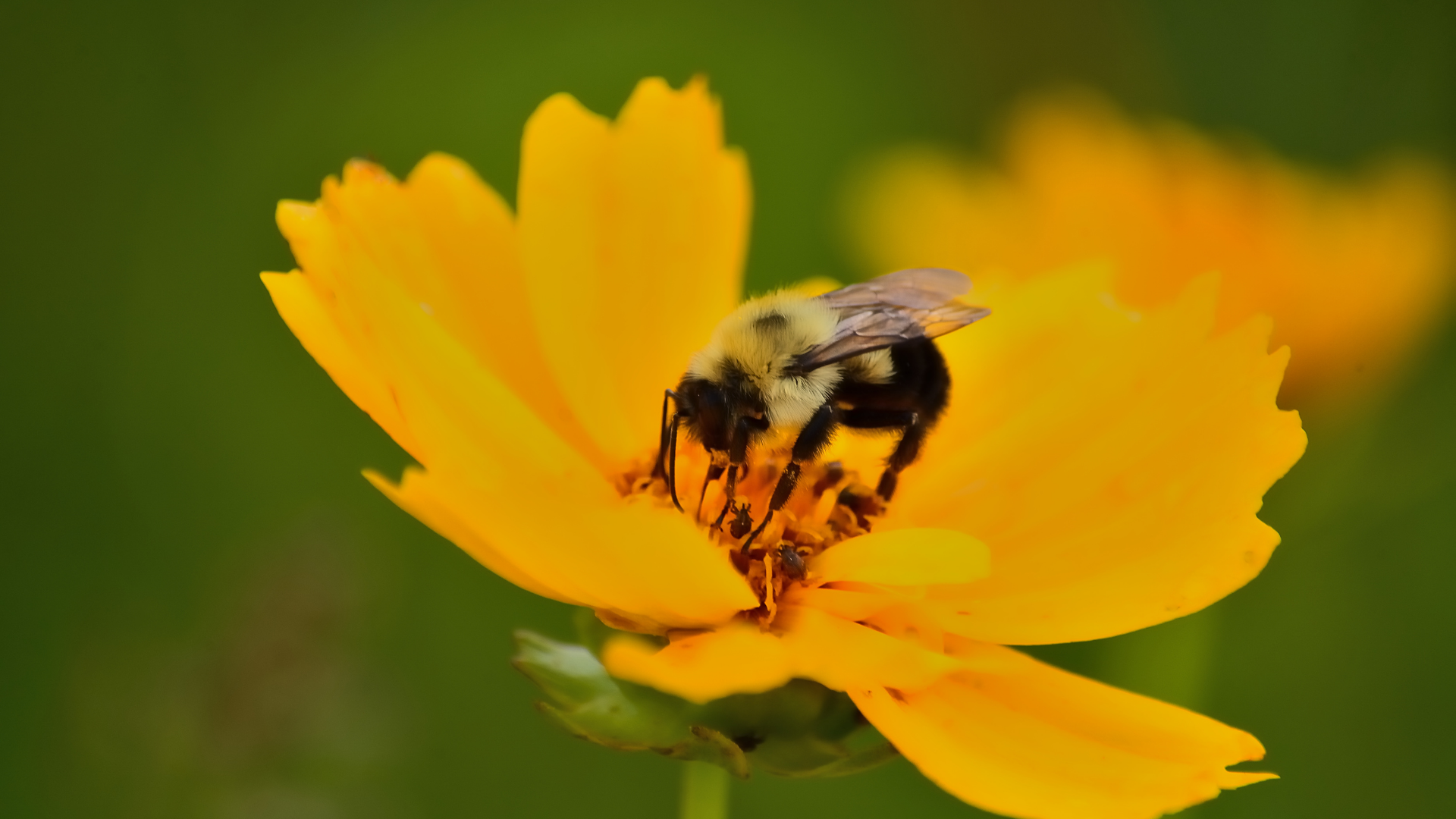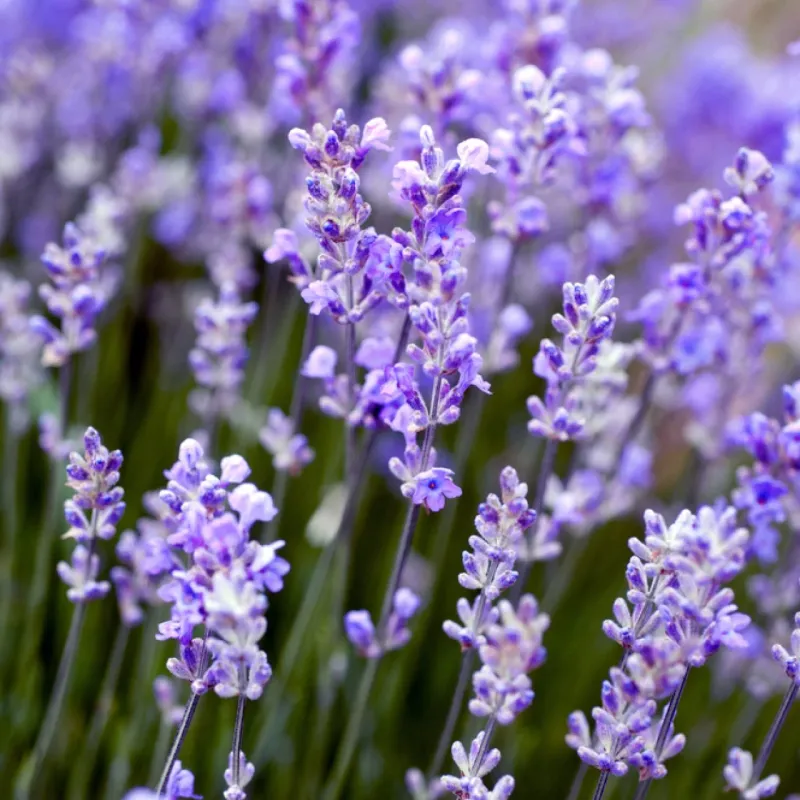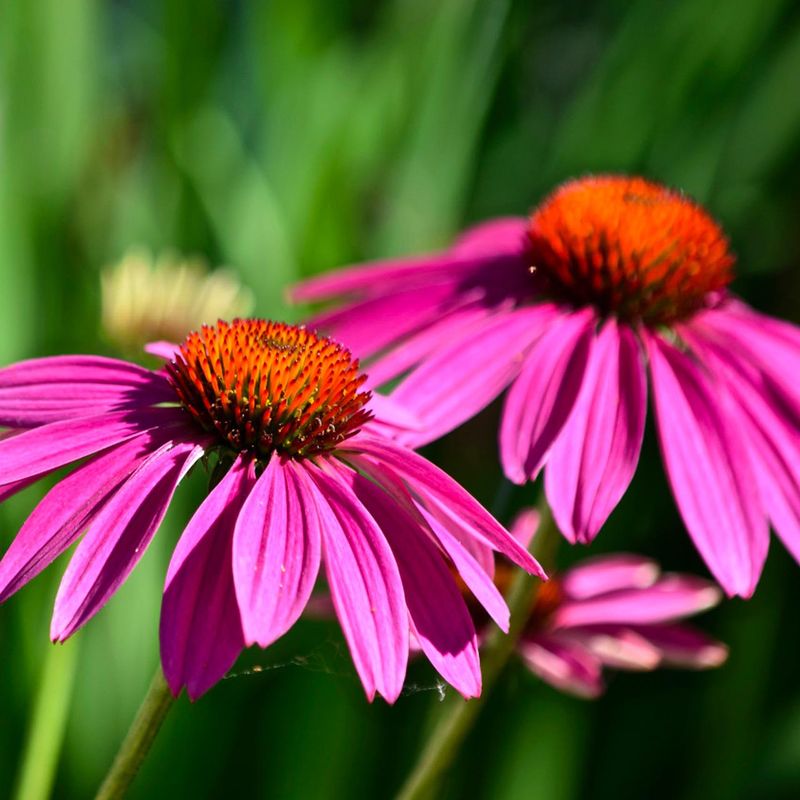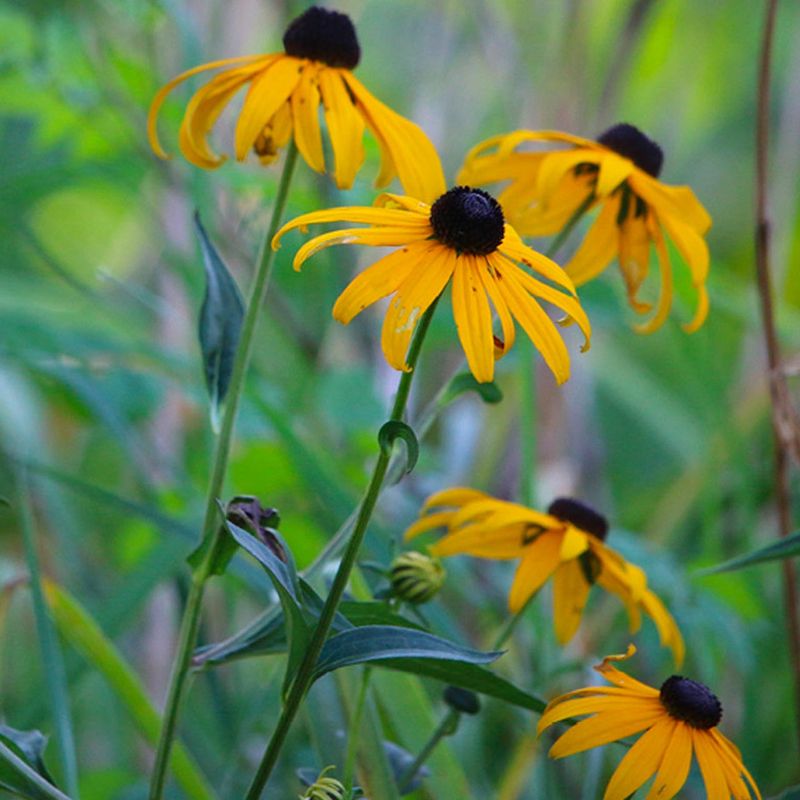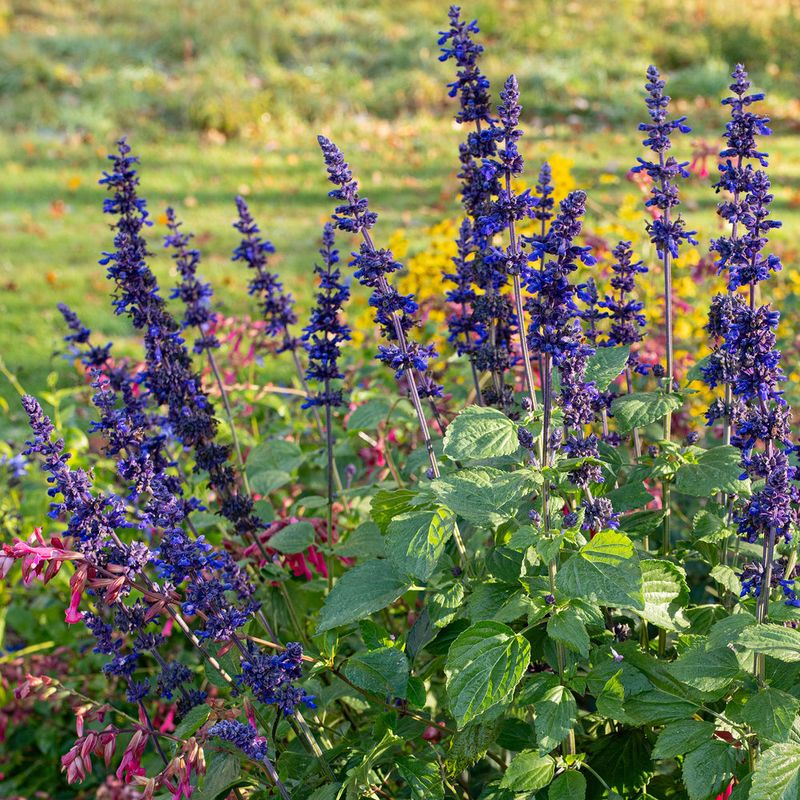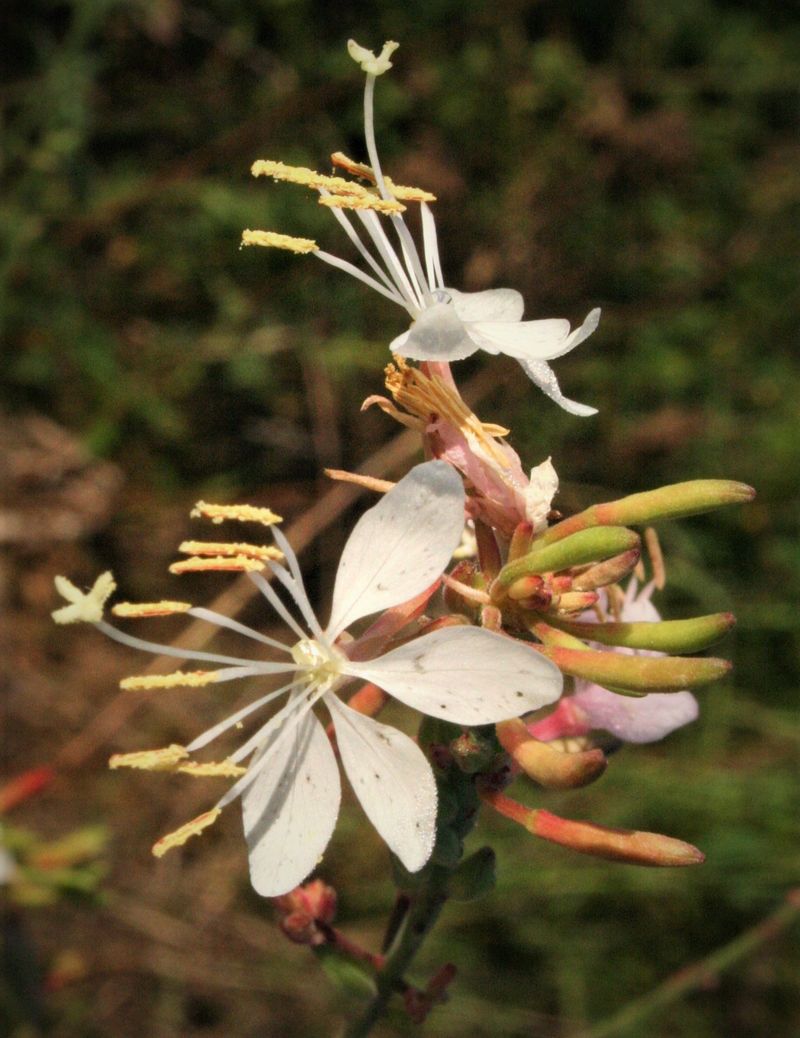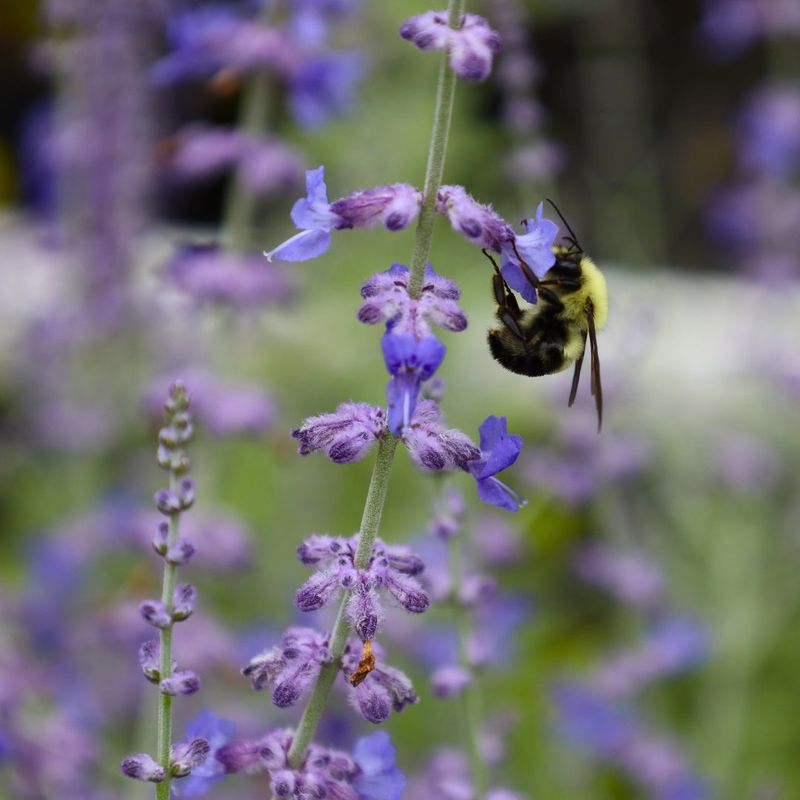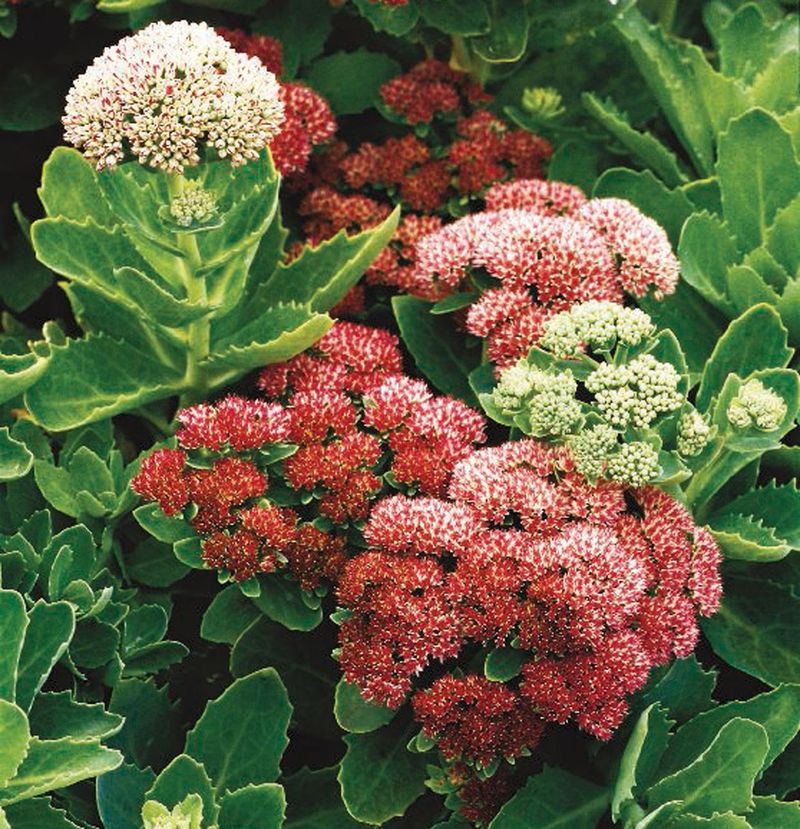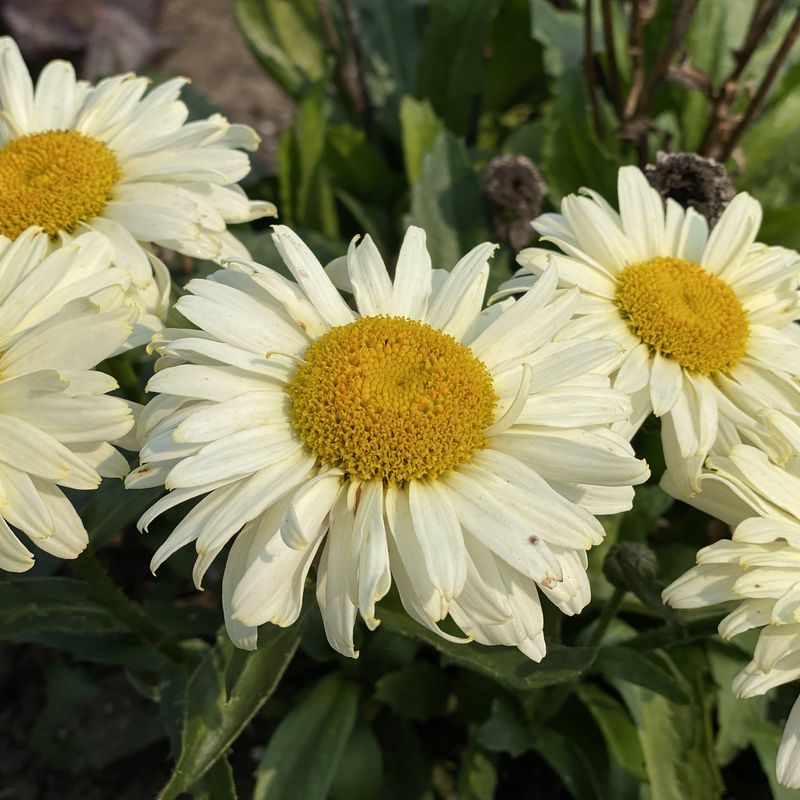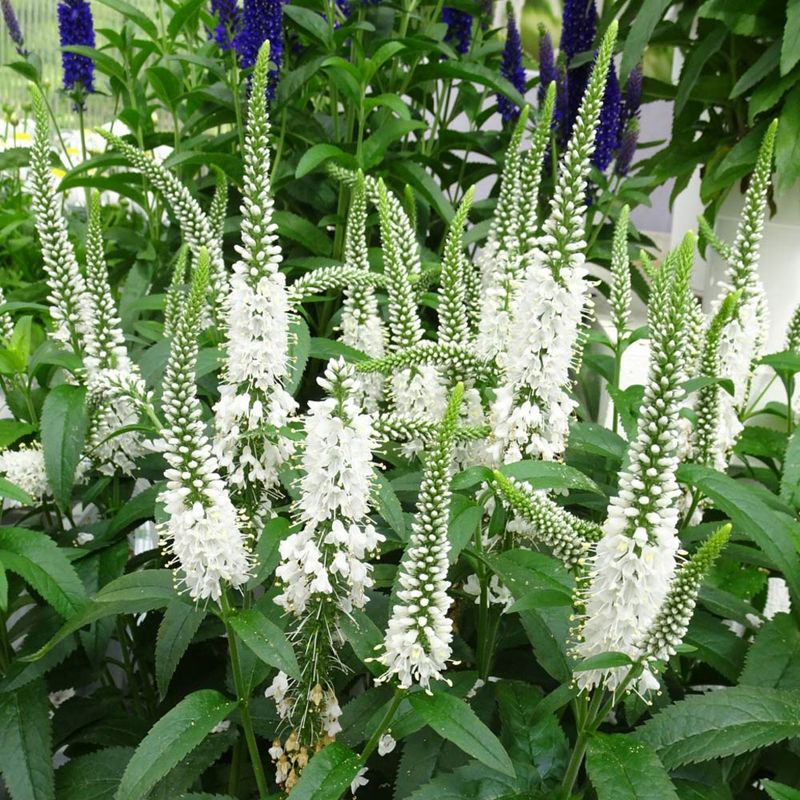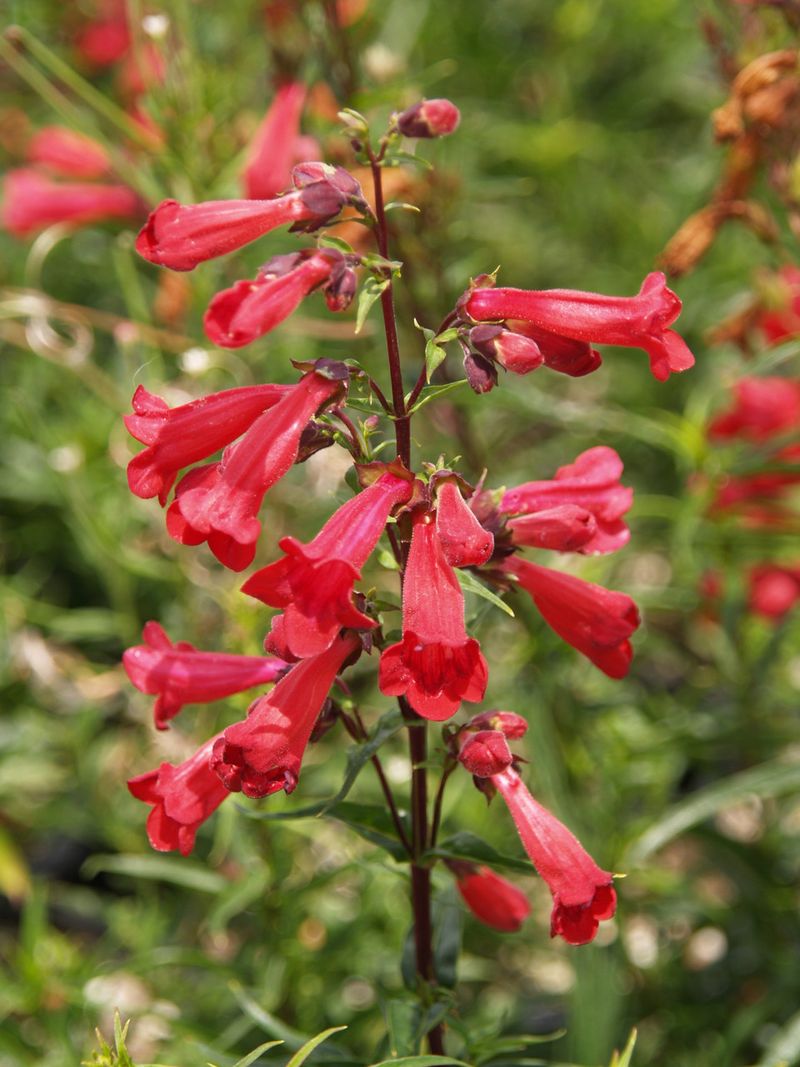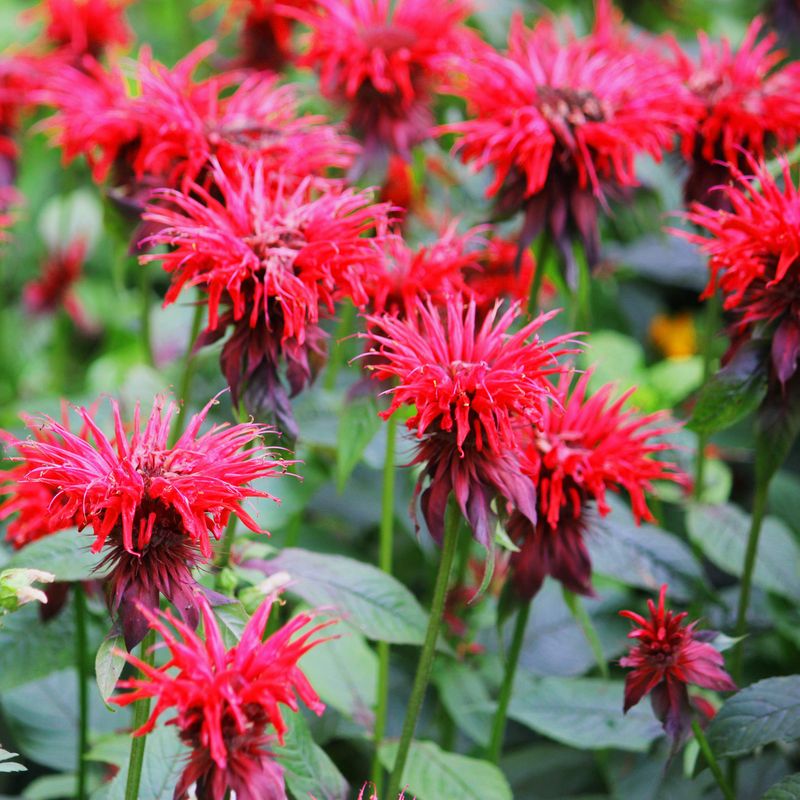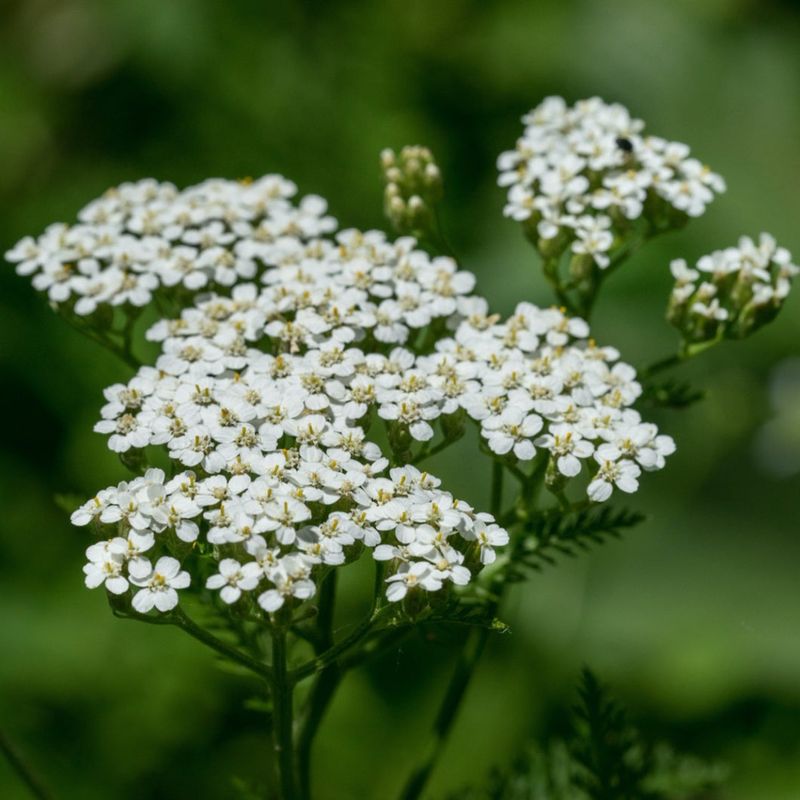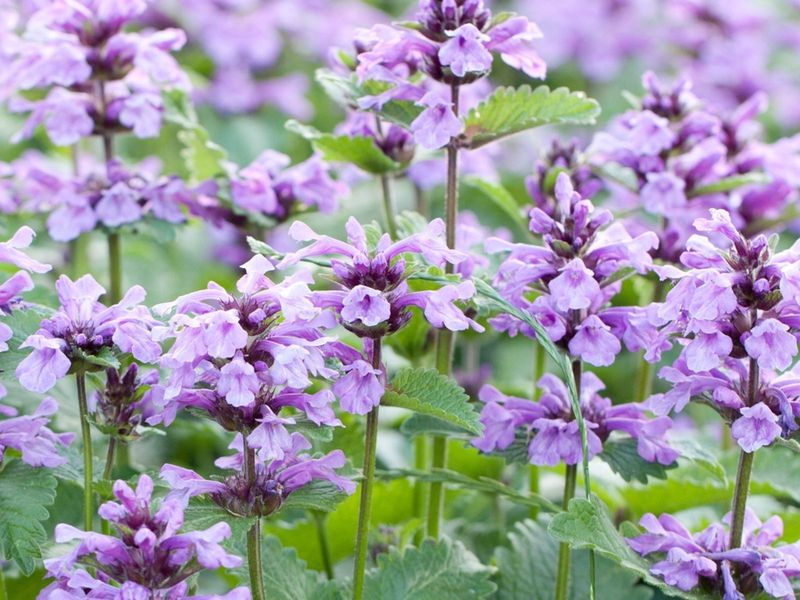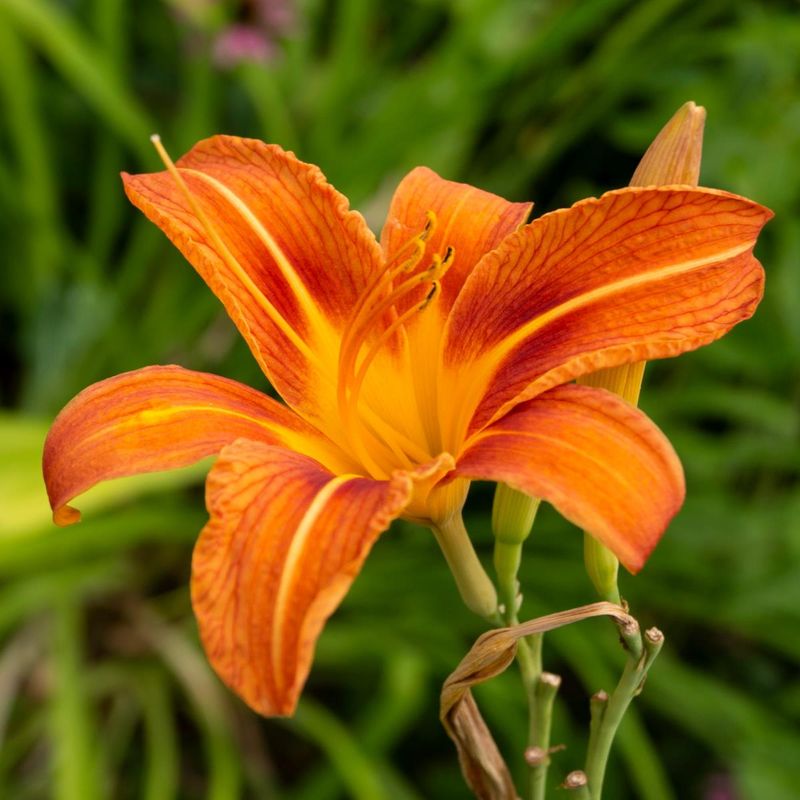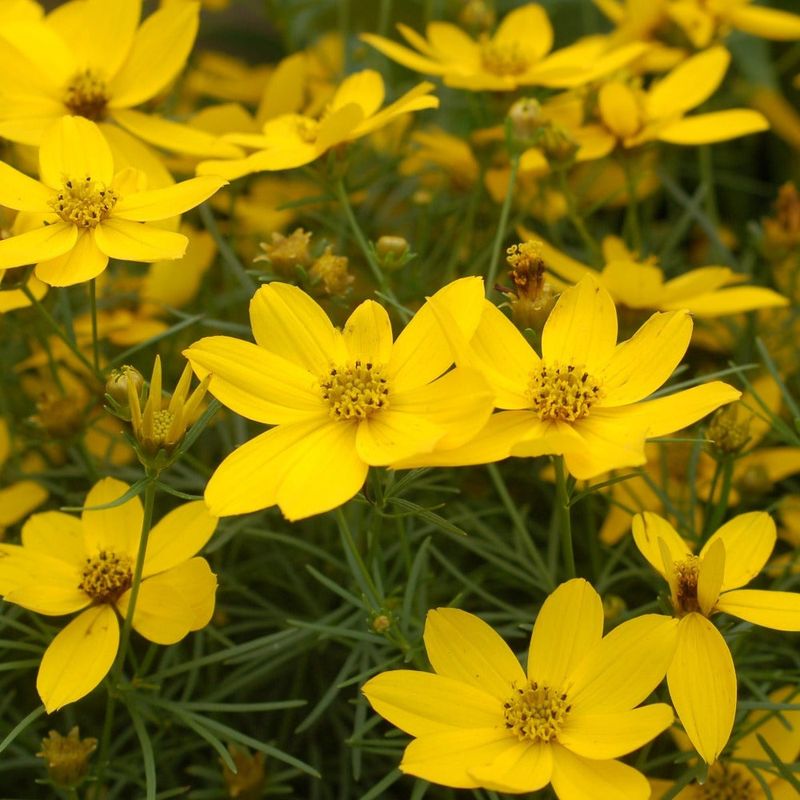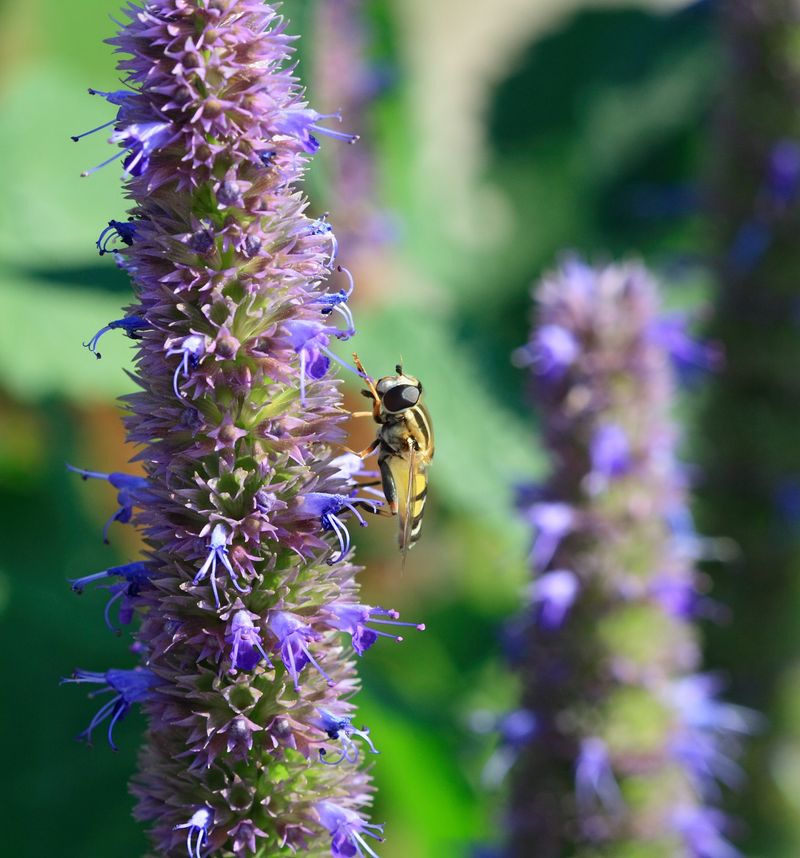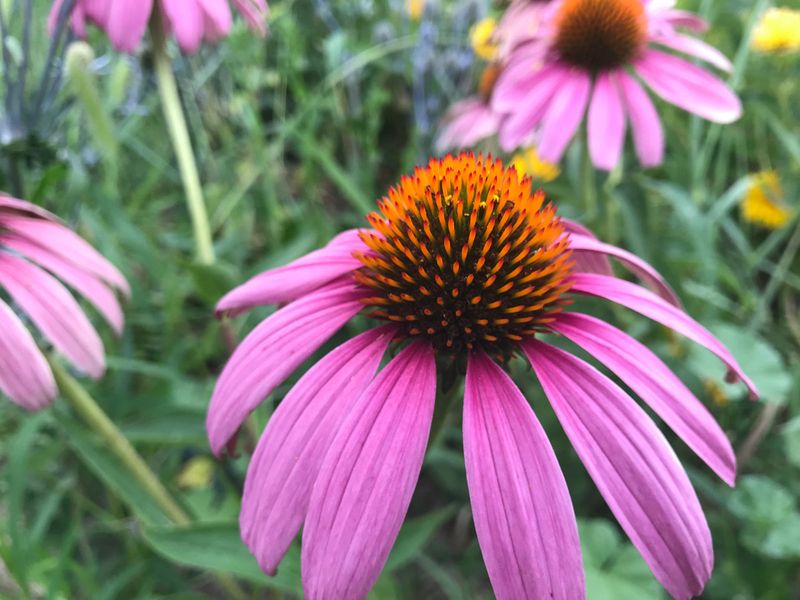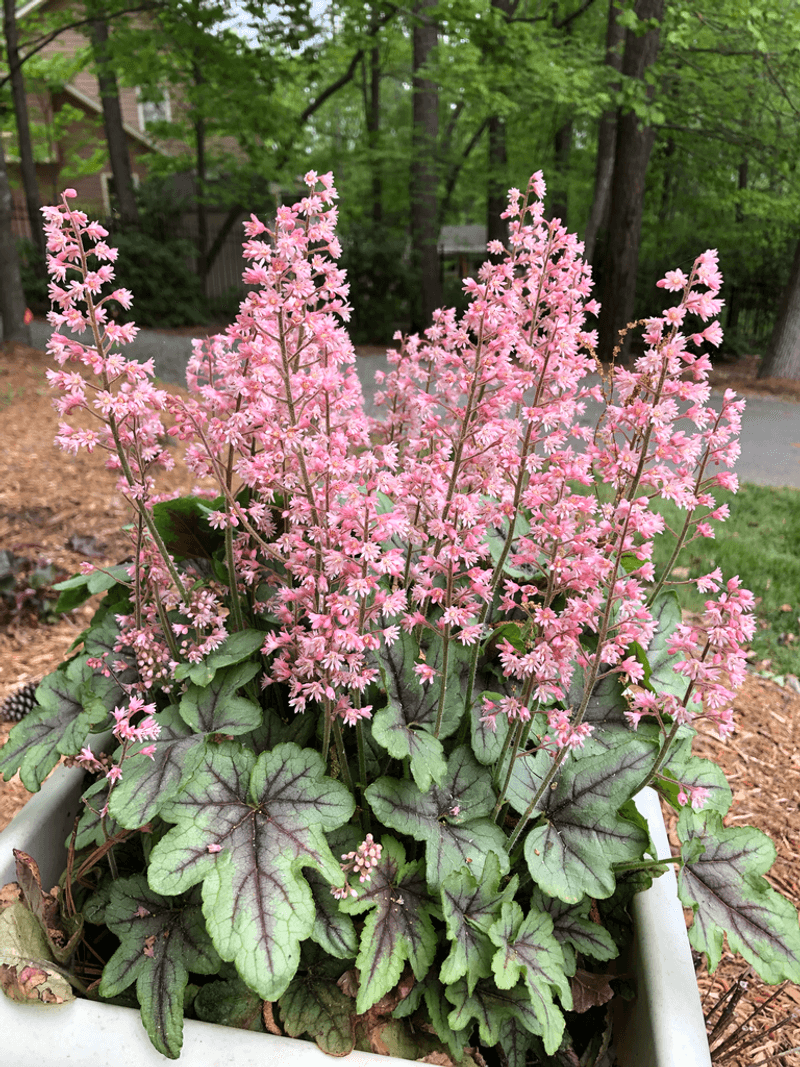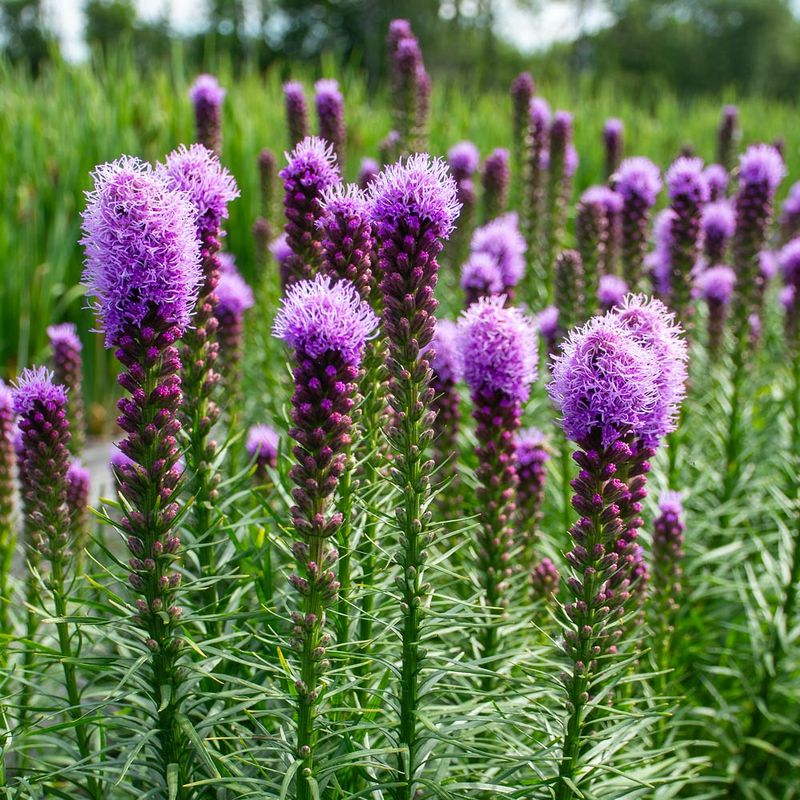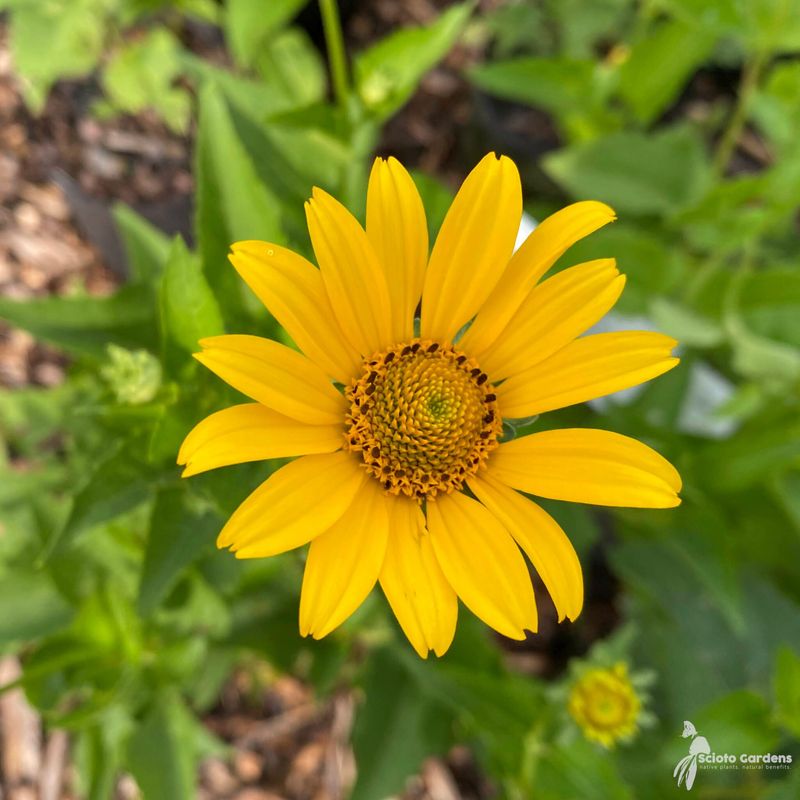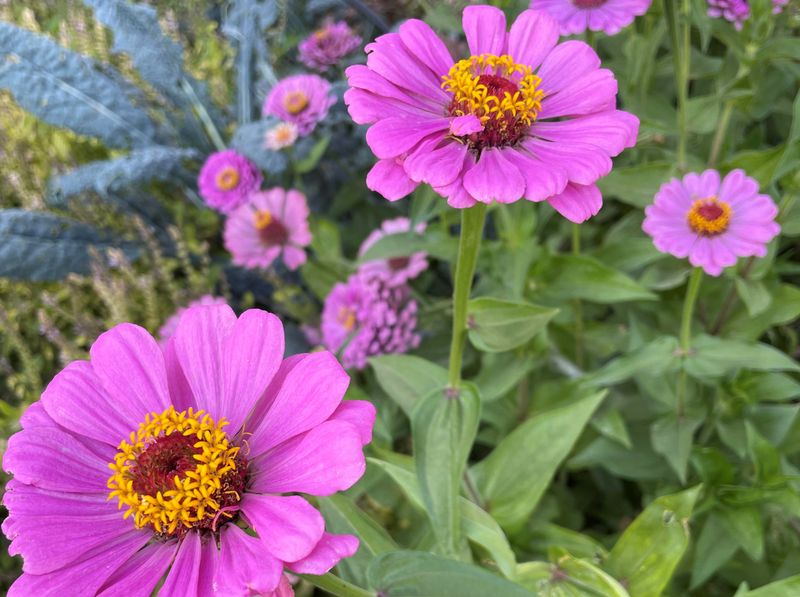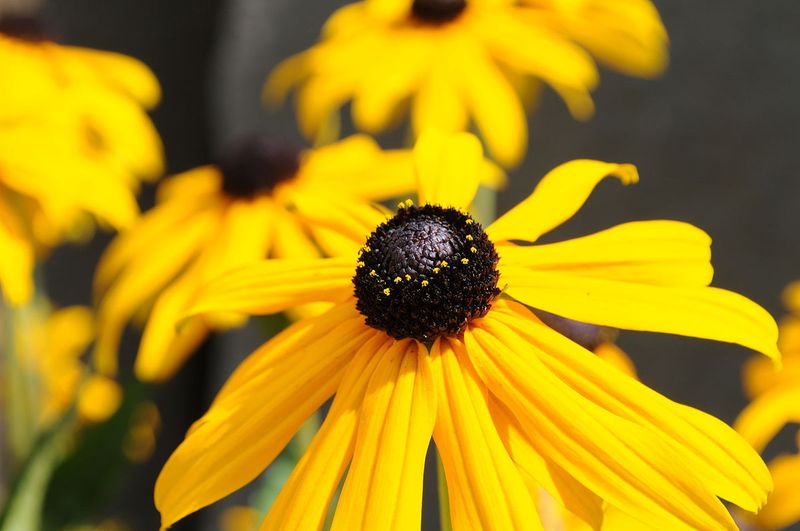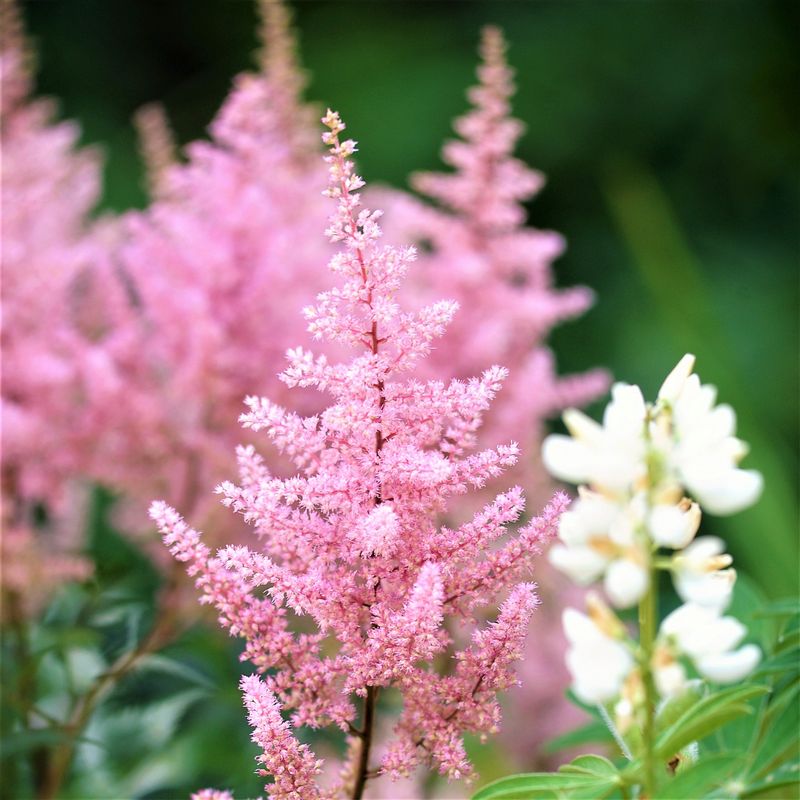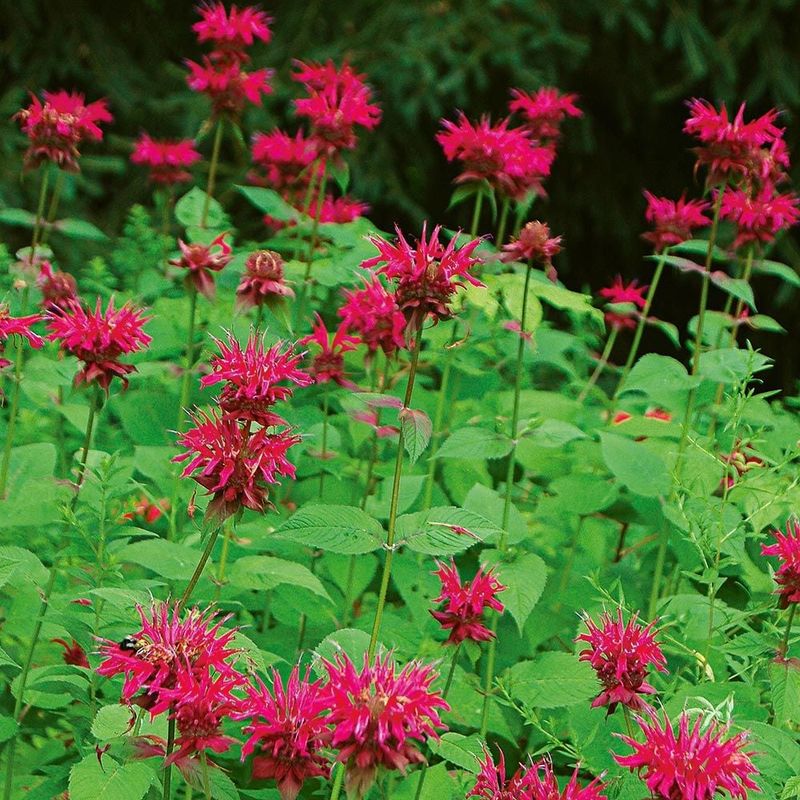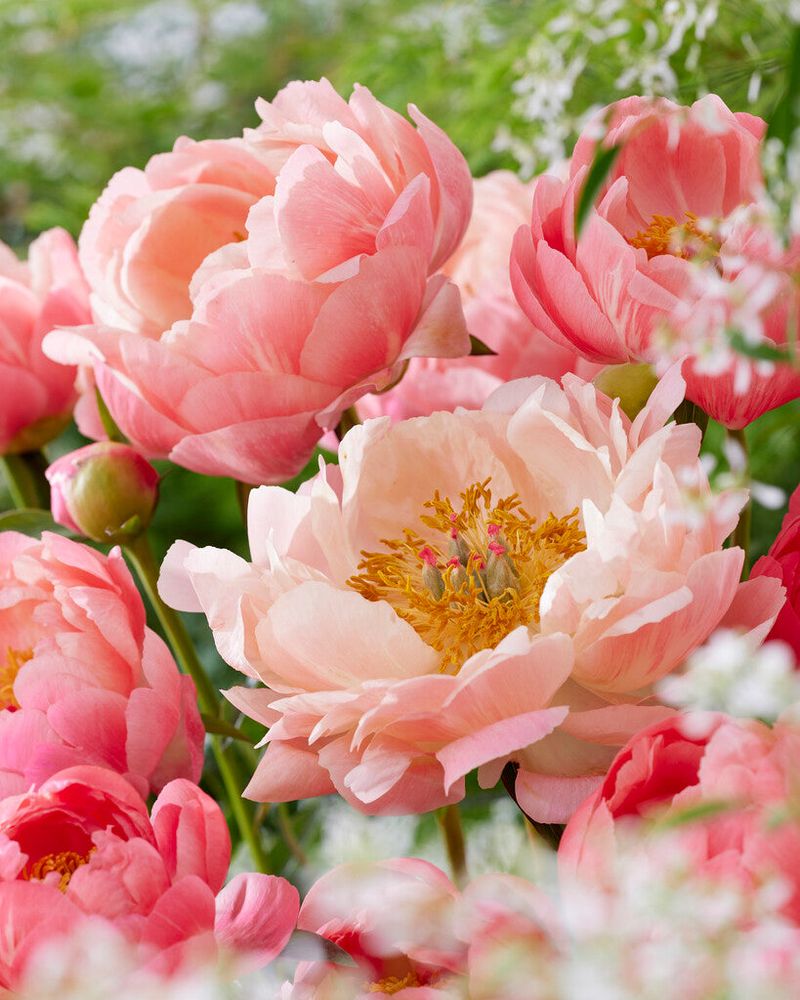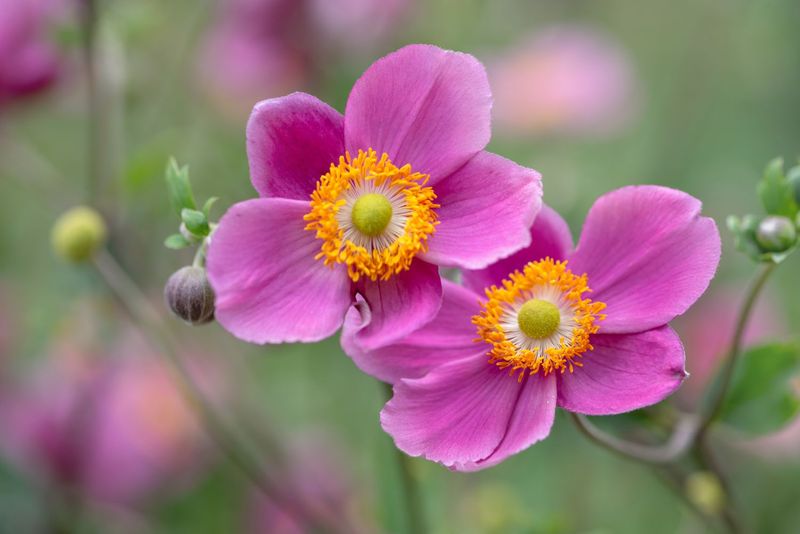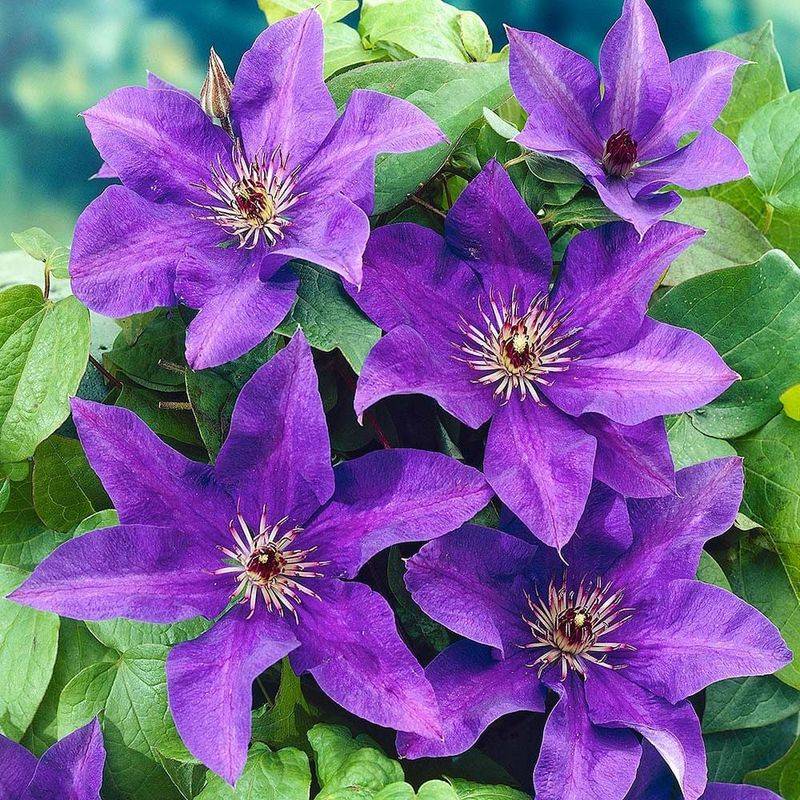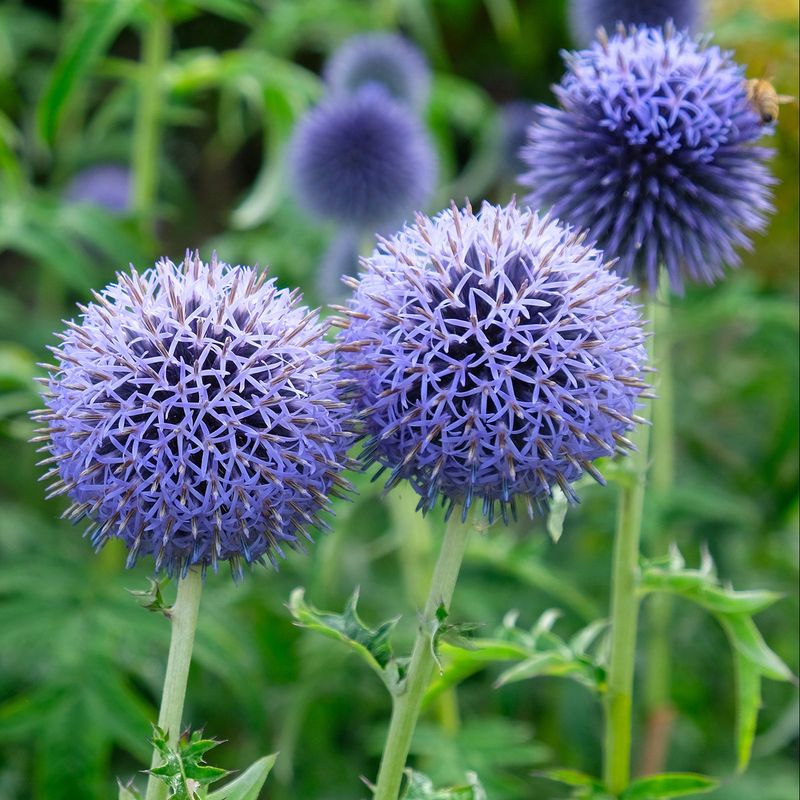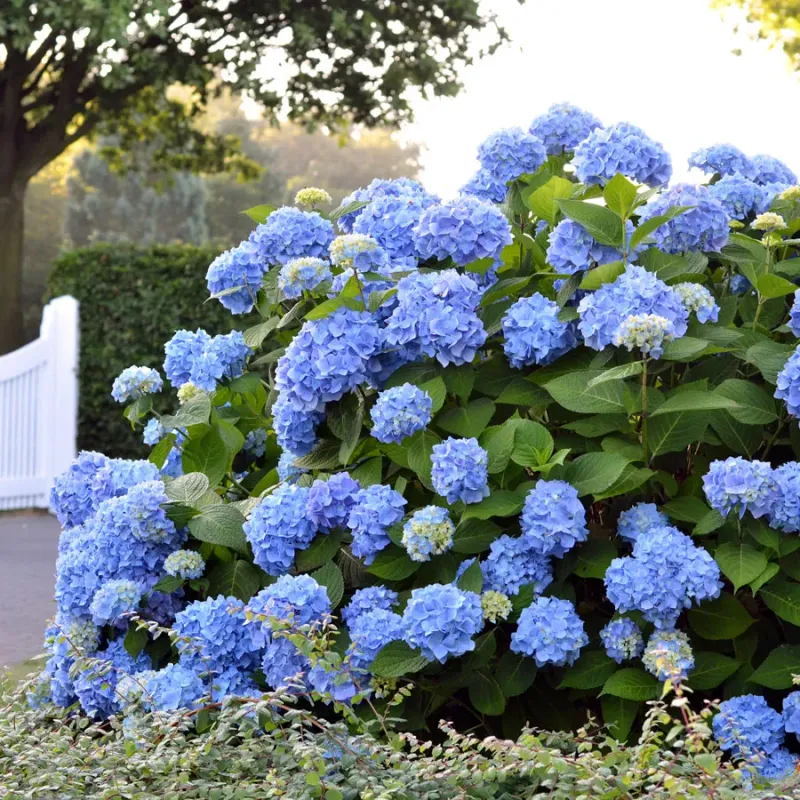Are you tired of the same old plants showing up in every garden? I once had a neighbor who was obsessed with coreopsis. Every time I passed her garden, it looked like a clone of the one next door!
So, I thought, Let’s shake things up a bit! Trust me, there are so many fresh, fabulous alternatives out there that will give your garden a unique flair. No more cookie-cutter gardens. Let’s get creative!
Your garden gnomes will be high-fiving you, and your neighbors will wonder how they missed these hidden gems. Ready to start planting something special?
1. Lavender
Imagine a garden filled with soothing scents that whisk you away to the French countryside. Lavender offers just that, with its aromatic purple blooms.
Unlike coreopsis, lavender is an olfactory delight, wafting calming fragrances across your garden. Its silvery foliage adds a touch of elegance, reflecting sunlight in a subtle shimmer.
For those struggling with restless nights, lavender is known for promoting relaxation and sleep. Add it to your garden for a serene escape right outside your door.
2. Echinacea
Every garden deserves a pop of personality, and this plant delivers. Echinacea’s cone flowers draw the eye and every pollinator in town.
Known for its medicinal properties, echinacea not only beautifies but also boosts your immune system. The sturdy stems stand tall and proud, with blooms that keep coming back year after year.
It’s like having a perennial parade right in your backyard. If you’re looking for resilience, echinacea is a plant that can handle a bit of neglect and still shine.
3. Black-eyed Susan
There’s something undeniably cheerful about a splash of yellow in a garden. Black-eyed Susans bring sunshine wherever they’re planted, with their bold yellow petals and dark centers.
These beauties are as tough as they are charming, thriving in less-than-perfect soil conditions. Their long-lasting blooms keep the garden lively from summer into fall.
Unlike coreopsis, they offer diversity in height and texture, adding dimension to your garden palette. Let them lead the way in creating a welcoming outdoor space.
4. Salvia
Looking for a plant that dances gracefully in the wind? Salvia’s striking spikes catch every movement of the breeze.
Its deep blue or purple flowers are a feast for the eyes, contrasting beautifully with lush green leaves.
Not just a pretty face, salvia is a magnet for hummingbirds and bees, ensuring your garden buzzes with life.
With a variety of colors to choose from, you can mix and match to your heart’s content, creating a symphony of hues.
5. Gaura
Some plants seem to float on air, and this one captures that essence perfectly. Gaura’s delicate blooms resemble butterflies, fluttering gracefully above slender stems.
It possesses an ethereal quality, adding a touch of whimsy to any garden. Perfect for filling in gaps, gaura provides a soft, airy texture that balances bolder plants.
It’s an ideal choice if you want a continuous show of flowers throughout the growing season without much fuss. Embrace the gentle charm gaura offers.
6. Russian Sage
Do you dream of a garden that requires minimal fuss? Russian sage fits the bill, with its drought-tolerant nature and striking appearance.
Its frosty green foliage contrasts with spires of lavender flowers, creating an elegant visual display. This plant thrives where others wither, making it perfect for challenging spots in your garden.
With a slightly aromatic scent, it adds a sensory layer to your planting scheme. Russian sage’s resilience makes it a reliable performer in any garden.
7. Sedum
Every garden could use a bit of succulence, and sedum delivers that with aplomb. Its fleshy leaves store water, providing a lush look even in dry conditions.
Sedum comes in a rainbow of colors, from fiery reds to soft greens. Whether creeping or upright, this plant adds texture and interest to any landscape.
It’s hardy, low-maintenance, and perfect for those who occasionally forget to water. Sedum’s versatility makes it an excellent choice for rock gardens or borders.
8. Shasta Daisy
Who doesn’t love a classic daisy look? The shasta daisy brings timeless charm to your garden with its bright white petals and sunny yellow centers.
Unlike coreopsis, these daisies offer a clean, simple beauty that’s hard to resist. Sturdy and reliable, they’re perfect for casual gardeners looking for easy-care plants.
They bloom in abundance, creating a sea of white that freshens any space. Shasta daisies are a must-have if you love effortless elegance in your garden.
9. Veronica
When it comes to vertical interest, few plants can compete. Veronica’s upright flower spikes add a dynamic silhouette to any garden.
With shades ranging from deep purple to sky blue, it offers a color for every taste. This plant is low-maintenance and blooms for weeks, ensuring your garden remains lively and colorful.
Perfect for borders or containers, Veronica adds a touch of sophistication without overwhelming your space. It’s a classic choice for modern gardens.
10. Penstemon
Ever wanted a plant that invites hummingbirds to your yard? Penstemon’s tubular flowers are just the ticket, acting as a magnet for these delightful creatures.
With its bright blooms, penstemon adds a splash of color and life. It’s drought-tolerant and thrives in sunny spots, making it an easy choice for busy gardeners.
The variety of colors available means you can find the perfect match for your garden theme. Let penstemon bring a touch of magic to your outdoor space.
11. Bee Balm
Forget the ordinary and welcome something extraordinary. Bee balm’s unique flower heads are a sight to behold, drawing bees, butterflies, and even hummingbirds.
It’s like hosting a garden party for pollinators! With delightful colors ranging from red to purple, bee balm is both beautiful and beneficial.
It’s easy to grow and spreads readily, filling your garden with joyful bursts of color. Keep the buzz alive in your garden with this fabulous choice.
12. Yarrow
Looking to add a touch of wild beauty to your garden? Yarrow, with its feathery leaves and flat-topped blooms, does just that.
It comes in an array of colors and provides a natural, meadow-like feel. This plant is incredibly hardy, thriving in poor soil and dry conditions.
Its medicinal properties are a bonus, with historical uses in healing. Yarrow’s long-lasting blooms and easy-care nature make it a fantastic alternative to coreopsis.
13. Catmint
Ever considered sharing your garden with a feline friend? Catmint’s aromatic leaves attract cats, and its purple flowers attract humans.
It’s a win-win for both you and your furry visitors. This plant forms neat mounds that are perfect for edging paths.
And while it’s a favorite of cats, it’s also a favorite of gardeners for its low-maintenance beauty. Introduce a touch of playfulness and practicality with catmint in your garden.
14. Daylily
Imagine a flower that blooms with the dawn and rests with the dusk. Daylilies offer a new bloom each day, gracing your garden with their short-lived beauty.
Their colors and hardiness make them a gardener’s favorite. These perennials are easy to grow and resistant to pests, providing a reliable splash of color.
Whether in mixed borders or mass plantings, daylilies are a versatile addition to any garden. Embrace the ever-changing display they provide.
15. Coreopsis Verticillata
Looking for a plant that’s a bit more understated than its cousin? Coreopsis verticillata’s finely cut foliage and bright blooms provide a softer look.
Its needle-like leaves create a textured background for its sunny flowers. This species is just as tough as its coreopsis relatives, tolerating poor soil and hot, dry conditions.
It’s a reliable performer, offering a long season of color. If you love coreopsis but want something a tad different, try this subtle variation.
16. Agastache
Imagine a plant that not only looks good but smells divine. Agastache, with its aromatic leaves and flowers, adds both beauty and fragrance to your garden.
Its tall spikes attract pollinators, ensuring a lively and productive garden. Resilient in dry conditions, agastache is a favorite for xeriscaping.
Its long blooming period means you’ll enjoy its pleasant presence for months. Let your garden benefit from the delightful combination of looks and scent.
17. Coneflower
Dream of a flower that stands tall and proud throughout the season? Coneflowers, with their sturdy stems and daisy-like blooms, offer just that.
The long flowering period ensures your garden remains colorful and inviting. These plants are drought-tolerant and thrive in sunny locations, making them a practical choice for busy gardeners.
Their cheerful appearance and resilience make coneflowers a fantastic alternative to coreopsis. Brighten your garden with their steadfast beauty.
18. Heuchera
When foliage steals the show, you know you’ve got a winner. Heuchera, with its colorful leaves, adds a bold statement to any shaded area.
The variety of colors and textures available provides endless design possibilities. Besides its striking appearance, heuchera is easy to grow and low-maintenance.
It’s perfect for adding interest to those tricky shady spots where other plants struggle. Let it be the foliage focal point that transforms your garden.
19. Liatris
Some plants know how to make an entrance, and this one does it with flair. Liatris, with its tall purple spikes, creates a dramatic vertical element.
Its unusual flowering habit, opening from top to bottom, adds intrigue. Liatris is loved by pollinators, making it a valuable addition to wildlife gardens.
Its drought tolerance and easy-care nature mean you can enjoy its benefits without the hassle. Elevate your garden with the delightful presence of liatris.
20. Heliopsis
Craving a burst of sunshine? Heliopsis lights up the garden with its cheerful yellow blooms. Often mistaken for sunflowers, this plant offers similar beauty on a smaller scale.
It’s a robust perennial that thrives in sunny spots, providing a long-lasting display. With minimal care required, heliopsis brightens gardens with ease.
If you’re looking for a sunflower look without the height, heliopsis is your go-to choice.
21. Zinnia
Ever wanted a bouquet of flowers that keeps giving? Zinnias offer blooms that last all summer long. These annuals are easy to grow and come in a rainbow of colors.
Their bold presence makes them perfect for cut flowers or filling gaps in your garden. Zinnias attract butterflies, adding a lively touch to any outdoor space.
For those who love color and cheer, zinnias are a fantastic choice.
22. Rudbeckia
Some flowers bring an unmistakable burst of joy, and this one is no different. Rudbeckia’s sunny yellow petals and dark centers create an eye-catching display.
These hardy perennials are perfect for sunny borders, bringing long-lasting color from summer into fall. They’re low-maintenance and incredibly resilient, making them a gardener’s favorite.
Add rudbeckia to your garden for a splash of sunshine and simplicity.
23. Astilbe
For those shady spots that need a touch of softness, astilbe is your answer. Its feathery plumes add texture and elegance, transforming dim corners with ease.
Astilbe thrives in moist, shaded environments, making it perfect for woodland gardens. Its variety of colors and textures allow for creative combinations.
Let astilbe be the plant that brightens and beautifies your shaded spaces.
24. Monarda
Seeking a bloom that’s as bold as it is beneficial? Monarda’s flower heads are a magnet for pollinators, inviting bees and butterflies to feast.
With its aromatic foliage and bright blooms, monarda is a garden favorite. It’s easy to grow and provides a striking splash of color.
Perfect for cottage gardens or wildflower meadows, monarda is both beautiful and useful.
25. Peony
Peonies are beloved for their opulent blooms and intoxicating fragrance, making them a garden favorite. Their large, lush flowers come in various shades of pink, red, and white, adding elegance and charm.
These perennials prefer full sun and well-drained soil, thriving when given plenty of space to grow. Once established, Peonies are quite hardy and can live for decades, making them excellent long-term additions.
Peonies require minimal maintenance, aside from occasional division to prevent overcrowding. Their longevity and beauty make them a worthwhile investment for any garden.
26. Japanese Anemone
Japanese Anemones are known for their elegant, simple flowers that appear in shades of white, pink, or lavender. These plants are perfect for autumn gardens, as they bloom from late summer into fall.
Their nodding flowers elevate the garden’s aesthetic, while their wiry stems add movement. Plant them in a partially shaded area for best results, as they thrive in cooler environments.
Japanese Anemones are fairly easy to care for, making them ideal for both novice and experienced gardeners. Regular watering and well-drained soil will ensure they flourish.
27. Clematis
Clematis is a versatile vine that can transform any garden with its stunning blooms. Available in a multitude of colors, from deep purples to bright whites, these flowers can add dramatic flair.
This climbing plant is perfect for covering fences or trellises, offering vertical interest and lush greenery. Clematis prefers sunny locations but appreciates some shade at the roots, so consider mulching.
Not only does Clematis provide an explosion of color, but it also attracts pollinators, supporting local ecosystems. With proper pruning and care, these vines can become a garden staple.
28. Globe Thistle
Globe Thistles bring a unique architectural element to gardens with their striking, spherical blue flowers. These hardy perennials are ideal for sunny spots and dry soils, thriving with minimal care.
Their distinctive blooms add texture and interest, while the spiky foliage provides contrast against softer plants. Globe Thistles attract bees and butterflies, enhancing biodiversity.
They are low-maintenance plants, resistant to pests and diseases, making them perfect for gardeners seeking robust and reliable additions to their landscapes.
29. Hydrangea
Hydrangeas are renowned for their voluminous blooms that change color based on soil pH, offering a dynamic display. These shrubs are versatile, fitting well in both urban and rural gardens.
They thrive in partial to full shade and require regular watering to maintain their lush appearance. Hydrangeas can be pruned to control shape and size, ensuring they remain a focal point in your garden.
With their ability to adapt to different environments, Hydrangeas are ideal for those looking to add a touch of elegance and color variation to their outdoor spaces.

